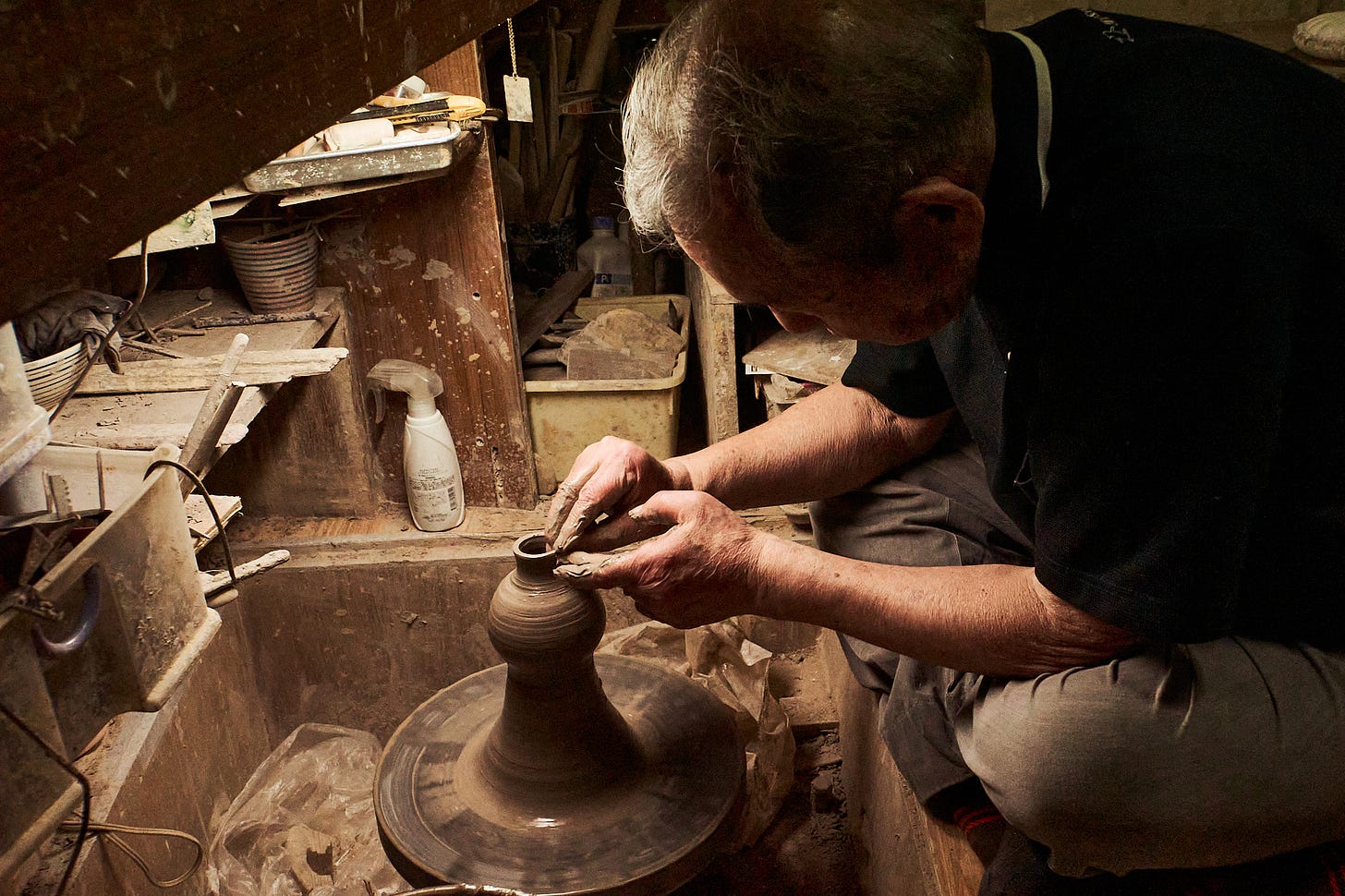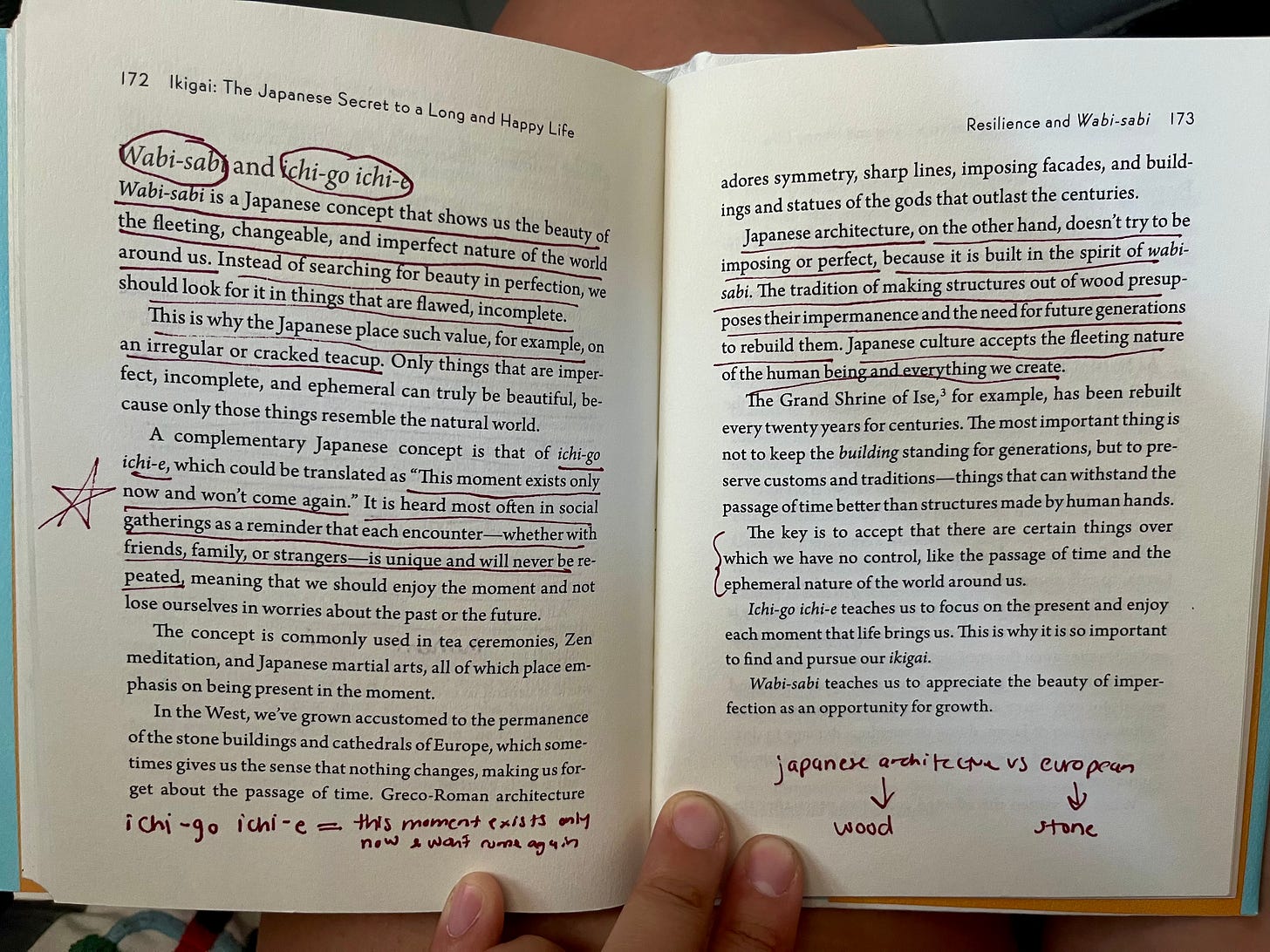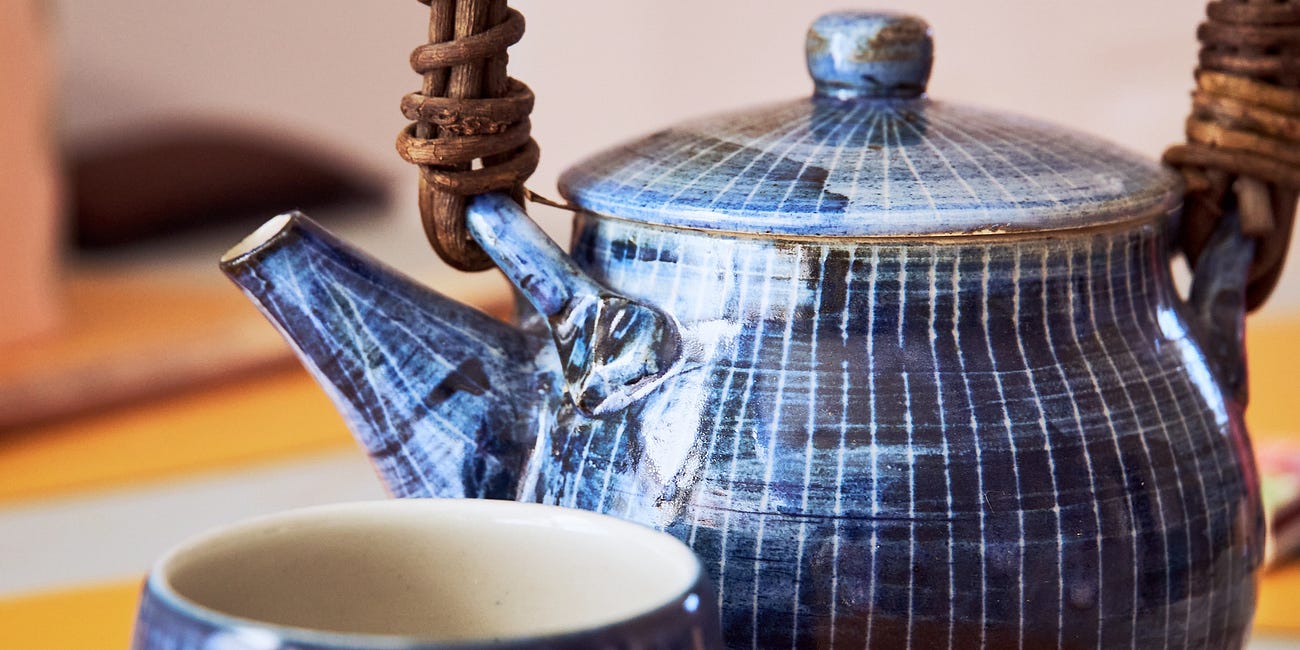A Souvenir that Actually Matters (Ikigai Story Part 1 of 2)
Life-changing lessons about ikigai from a ceramics shop in Japan
With a swiftness of a much younger person, the 80-year old Japanese man sat cross-legged on a thin red floor cushion in a dimly lit, closet-sized back room. His name was Mitsuo Mishima. In his little pottery studio behind his ceramic shop in Kyoto, he taught me about ikigai.
Ikigai is a Japanese concept of a reason for getting out of bed in the mornings. It’s unique to each of us and is the intersection of four things: what we love, what the world needs, what we are good at, and what we can be paid for. In other words, it’s what’s at the center of our personal mission, passion, profession, and vocation.
These ideas always sound nice in theory but it can be challenging to visualize in real life. I first heard the word ikigai in college while studying successful people, yet it felt abstract—something reserved for extraordinary individuals. That perception shifted the moment I stepped into Mitsuo’s ceramic shop on the steepest hill in Kyoto.
The Backstory Matters
It was a hot July day and I was sprinting through the Istanbul airport catching my flight to Hong Kong, when I ran past a bookshop and a small blue book caught my eye. In big bold letters it read: IKIGAI. Just days earlier, my mentor, Ron, had mentioned the book in an email after I told him I was heading to Japan. I don’t believe in coincidences, so I took it as a sign, dashed into the D&R bookstore, and walked out with a new companion. Books are a solo traveler’s best friend.
During my time in Hong Kong, devoured the book. One story that stood out was about about Steve Jobs, whose deep admiration for Japanese culture shaped Apple’s design, philosophy, and business practices. Apple is renowned for it’s simplicity, elegance, and functionality— qualities influenced by Japanese aesthetics and the Kaizen approach to continuous improvement .From attention to detail and typography to the Omotenashi philosophy of hospitality and even packaging, Japanese craftsmanship left an enduring mark on Jobs and Apple.
His adoptive father, a woodworker, had taught him at a young age that the back of a cabinet should be as well-crafted and beautiful as the front, even if no one sees it. This philosophy aligns with Japanese artisanship, where the unseen details matter just as much as the visible ones. It’s said that Jobs visited Kyoto many times in search of a particular porcelain artist who championed details and innovative techniques. When he finally met him, he commissioned a tea set and had it shipped back to the US.
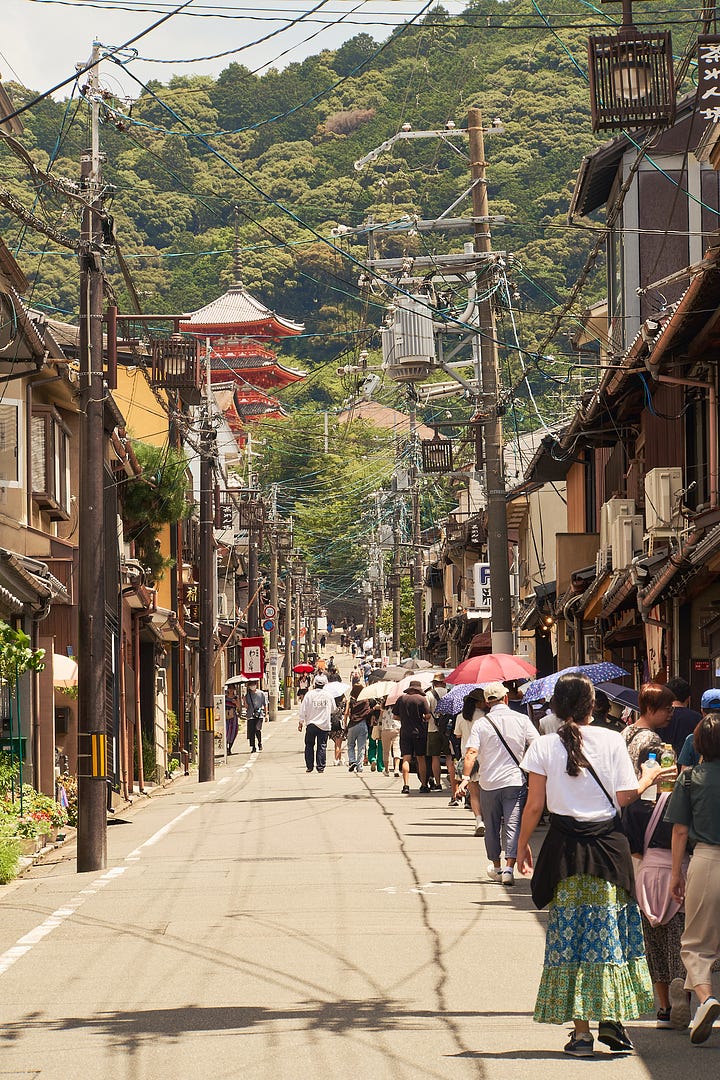
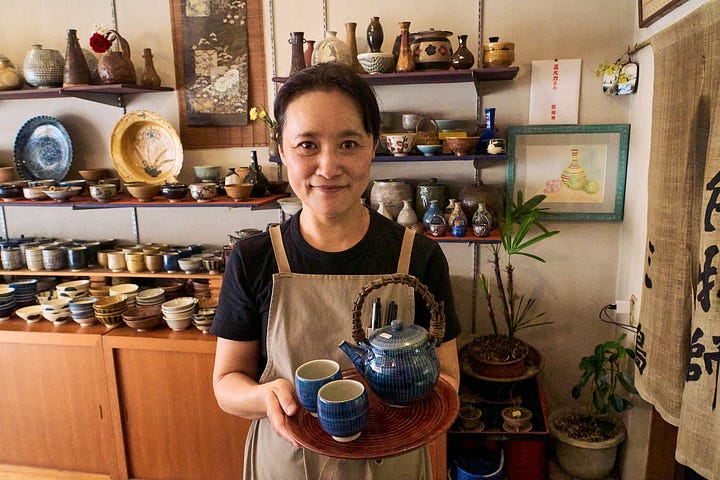
A Ceramics Side Quest
After a few days in Tokyo, I arrived in Kyoto by bullet train. Skipping the typical tourist recommendations, I wandered the city in search of ceramics—not just to buy, but to find one that truly resonated with me. We often find joy in the smallest cups for our daily tea or coffee, and I wanted something that carried meaning. Yet, after an afternoon of going in and out of shops, I found either mass-produced pieces or unwelcoming atmospheres. I wasn’t sure what I was looking for, but I trusted I’d know when I found it.
Stubborn yet determined, I asked the hostel owner where to find the best ceramics. “Go to Kiyomizu-dera temple,” he said. “The street leading up to it is a steep hill lined with ceramic shops. You can’t miss it.”
The next day, while my hostel friends set off for museums and the Golden Pavilion, I followed my instincts. Sometimes, we get these gut feelings, nudging us off the beaten path. It can feel silly to go against the current, but more often than not, it leads somewhere unexpected and memorable. This was one of those times—I just didn’t know it yet.
The hill rose straight up into a mountain and the tip of the orange temple was visible in the distance. One by one, I stepped into the shops, scanning the shelves and feeling the energy of the room. But nothing stood out an many shopkeepers were distant and uninviting.
I was half way up the hill, but my spirits sank as the sun grew stronger. I thought about giving up and going to check out a museum with nice air conditioning instead. As I scanned my surroundings, a bar with promising AC caught my eye, and I took a detour inside. While my head cooled off, I savored an icy cold sake by the window.
That’s when I spotted a gray brick shop across the street, where an older woman stood outside, smiling and waving to passersby. The familiar feeling in my gut returned. This was it. I finished my drink, went back into the heat, crossed the street and approached the shop.
This story, of course, is all about the long way home. The journey is long and full of uphills, but that’s where the treasures of life can be found. Don’t worry, it’s not a cliff=-hanger. Part 2 is here!
PS: One of the readers suggested I add a quote at the end of each piece. Words to ponder:
“And above all, watch with glittering eyes the whole world around you because the greatest secrets are always hidden in the most unlikely places. Those who don't believe in magic will never find it. — Roald Dahl
What a Teapot Can Teach Us (Ikigai Story Part 2 of 2)
This is part 2 of the the Japan ikigai story. If you missed part 1, you can read it here first.



